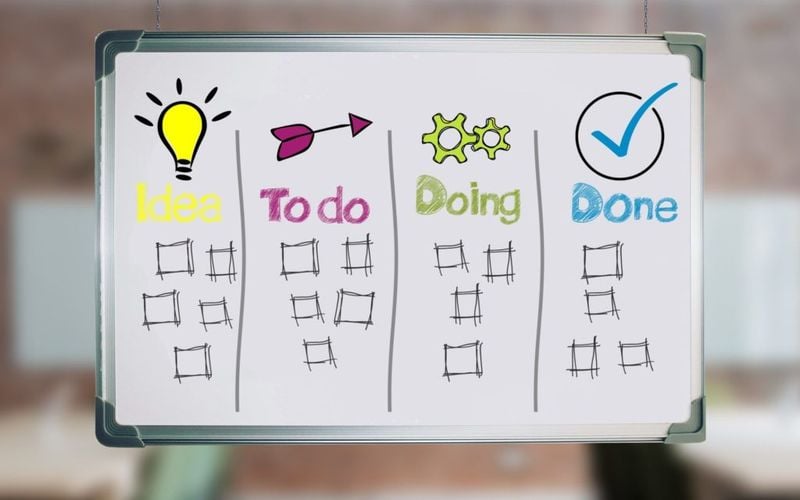How Product Managers and UX Designers Can Play In the Same Sandbox
The product manager says:
I’m in charge of making this product a success. I’m the CEO of the product!
The UX designer says:
I’m in charge of the end-to-end experience of the product.
Who’s really in charge?
If you have 2 people in charge, you might think that there are too many cooks in the kitchen and that there will be a ton of conflict while building out and managing the product.

Even if you were to create a RACI matrix to see who would be responsible, accountable, consulted, and informed, there might be a chance that both of these roles would think that their role falls into all 4 of the RACI buckets.
Who’s right and who’s wrong? …or should they accept the idea that they both should co-manage the product?
The short answer: there is no one-size fits all solution.
Some organizations are more agile than others and some teams are more empowered more than others.
Culture, communication, trust, team dynamics, and business processes can heavily impact how product managers and UX designers can work together.
The long answer: keep reading…
The Tale of 2 Tigers
There’s a Chinese idiom that says, “One mountain cannot contain two tigers.” This applies to so many areas of life, business, and politics. Having more than 1 major cook in kitchen can create so much conflict if the team isn’t built for success.
Harvard Business Review released an article entitled, “How to Co-Lead a Team.” The author, Rebecca Newton, mentions that the idea of having 1 leader is long gone. However, she does provide several keys for sustainability.
“Share ownership of the goal but divide roles and responsibilities.”
Going back to the RACI matrix, the roles and responsibilities have to be more granular so that the roles and responsibilities can be separated between the product manager and the UX designer or UX team.
If you’re working for a small start-up, there’s a chance that you don’t need all of these roles. In one company, I was the Director of Technology, UX team, product team, and more.
With larger teams, you can split the responsibilities across multiples roles.
Conflicts can arise if you have 2 or more captains leading the ship. I’ve seen organizations create chaos by using the higher-level application of co-management for cross-functional teams. The idea was to cross-train for business continuity purposes. Nice intent, but wrong execution.
Imagine a country led with 10 presidents simultaneously acting as the president.
There’s a reason why we have a president and a vice president. On a naval ship, there can be multiple captains that are trained to direct a ship, but there’s only one commanding officer.
I’m not saying that hierarchy is the best solution. However, it works well in larger organizations, and it’s easier to scale.
What Are My Responsibilities?
If you’re working in the role as a “product owner,” then your role is focused on the “overall success” of the product. This may include collaborating with stakeholders, gathering requirements, prioritizing the backlog, creating roadmaps, and working with the development team.
As a UX designer, your role would be integrated with the development team. This may include user experience research, usability and accessibility studies, strategizing content, designing layouts, and developing prototypes. All of these responsibilities are critical in creating a successful product.
Once the roles and responsibilities have been set, make sure that they are effectively communicated to the whole team.
How Agile is Your Team?
You’ll find organizations with extreme hierarchy, while others are more flat or agile.
Rebecca Newton stated, “Be open to renegotiating your roles based on changing circumstances and ambitions.”
Within an agile team, circumstances can change constantly.
If your organization is open to agile methodologies, realize that roles and responsibilities are not set in stone.
One of the key principles of the Agile Manifesto states:
“the best architectures, requirements, and designs emerge from self-organizing teams.”
As your team develops, you or other team members will learn new skill sets and knowledge that can greatly impact the success of the product.
When I started learning about UX well over a decade ago, nobody in my team knew what it was. Instead of waiting for my boss to assign a UX task, I discussed it with the team and used a UX framework as a guide.
At the time, I didn’t have “designer” or “developer” in my title. However, I realized the importance of UX and how it could be integrated into my work.
Build projects around motivated individuals. Give them the environment and support they need, and trust them to get the job done. ~ Agile Manifesto
Conclusion
I’ve provided some ideas about “playing in the same sandbox.” The main points include understanding your role and responsibilities, defining them if you’re not sure about them, understanding the dynamics and culture of your team…and of course, do what you can do to improve the relationship.
At the end of the day:
All you can do is all you can do but all you can do is enough! ~ Art Williams





